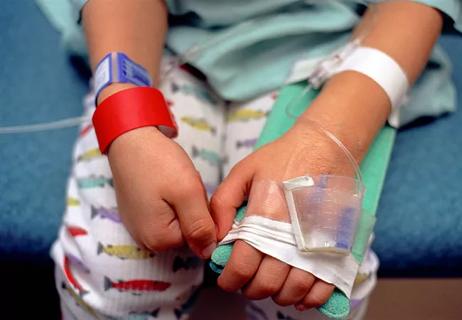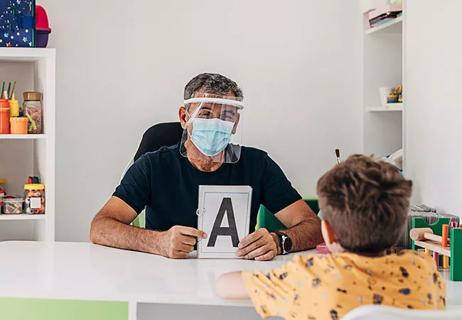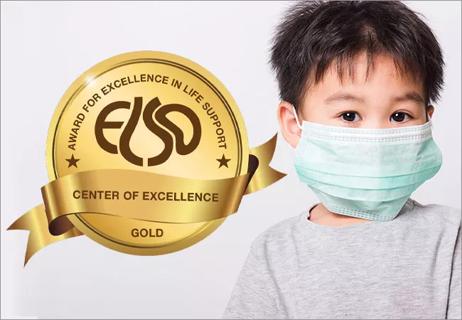Though completely preventable, lead poisoning remains a public health threat

Despite successful lead abatement efforts in the United States over the past 50 years, lead poisoning continues to be a serious public health threat — and children are particularly vulnerable.
Cleveland Clinic is a non-profit academic medical center. Advertising on our site helps support our mission. We do not endorse non-Cleveland Clinic products or services. Policy
The Centers for Disease Control and Prevention’s stance has evolved considerably since the early 1970s when the use of lead was widespread in the U.S. During this time, the average blood lead level (BLL) in U.S. children was close to 20 μg/dL, and episodes of lead poisoning-induced seizures and comas were common. The medical community considered a blood lead level of 40 μg/dL or greater appropriate for intervention.1
Since then, alarming reports about lead’s irreversible, long-term damage to the brain and nervous system have resulted in new clinical guidance. As recently as 2012, a blood lead level of 5 μg/dL was considered safe.
Today, the CDC says no level of lead is safe in a child’s body.
Though completely preventable, lead poisoning remains a public health threat – a silent and insidious one – as the onset of symptoms is often delayed, and the pathological damage has already been done. In most cases, lead poisoning occurs in or around the home.2
Roopa Thakur, MD, staff physician, Medical Director for Youth Strategies in Community Health and Partnerships and Medical Director for School-Based Health at Cleveland Clinic Children’s, says the initial diagnosis can be complicated.
“The vast majority of cases are acutely asymptomatic; this is why screening is so critical. If the patient is symptomatic, acute symptoms might include irritability, behavioral problems, abdominal pain, lethargy, loss of appetite, headaches and memory loss. In the event of very high blood lead levels, we can see seizures,” says Dr. Thakur.
She says lifelong consequences include: decreased bone and muscle growth, hearing loss, damage to the nervous system, ADHD, developmental delays and decreased IQ.
Cleveland Clinic follows the Ohio Department of Health (ODH)’s guidelines to screen children for lead poisoning during their well-check appointments.
At the child’s 6-month visit, Cleveland Clinic pediatricians begin to counsel parents on the risks of lead exposure. Around this time, children are beginning to engage in more floor-based play and persistent hand-to-mouth behaviors, both of which remain fairly consistent until about age 2. Children who are neurodivergent may also be more likely to engage in prolonged hand-to-mouth behaviors, increasing their risk for exposure beyond the age of 2 years.
“During this time, we provide education on at-home risks, the importance of hand and home hygiene, limiting occupational exposures brought into the home from other members of the household, and provide education about products known to contain lead,” says Dr. Thakur.
Per Ohio’s 2019 mandate, at 12- and 24-month well-checks, patients who are on Medicaid, live in a high-risk zip code, or who screen positive for exposure risk through an ODH-developed questionnaire, are indicated for further counseling and BLL testing. This is done either through a finger prick or blood draw from the lab.
If the child has a normal lead test at ages 12 and 24 months, then testing is discontinued. However, if the child again screens positive on the questionnaire, then the team will continue to test the child annually. Dr. Thakur says this positive screening may indicate the ongoing potential for exposure, like in the case of a parent with frequent occupational exposures.
What about when elevated levels are detected? The American Academy of Pediatrics advises that intervention should be provided to all children with a BLL of 5 μg/dL or greater. Primary management includes: eliminating the source of lead, counseling parents on hand and home hygiene, promoting a healthy diet and conservative follow-up. 3
“Identifying the source is critical,” adds Dr. Thakur. “Pediatricians should refer families who are affected to their local public health departments for a thorough environmental assessment.”
But when levels are higher, around 45 μg/dL, chelation therapy may be recommended. This chemical process involves the injection of ethylenediaminetetraacetic acid, which binds to heavy metals in the bloodstream and deposits them in urine. It can be administered intravenously, requiring inpatient admission. Some physicians may opt to manage care in an outpatient setting using oral therapy; however, Dr. Thakur cautions, this is not appropriate for patients with higher BLLs.
There is also some controversy around the use of chelation therapy, as it’s not curative and carries the potential for significant side effects. The technique has been successful in lowering BLLs but has not demonstrated effectiveness in reversing the neurocognitive and neuropsychological effects of lead poisoning.3
“Potential side effects of chelation therapy can include kidney damage, hypocalcemia and allergic reactions. There is also the consideration that unless you address the source of lead exposure, chelation itself will not fix the problem. The child will be discharged right back home to the source of lead and lead levels may rise again,” says Dr. Thakur.
Aside from chelation, flushing out the bowel to eliminate lead paint particles in the GI tract may be recommended in cases of acute poisoning, adds Dr. Thakur.
But most of the time, treatment is palliative.
“Once a child has an elevated blood lead level, our concern for developmental delays rises. It’s important to connect patients to early intervention services, such as Help Me Grow, and other community resources to promote development,” concludes Dr. Thakur.
References

Cleveland Clinic physicians offer their insights

Increasing support for breastfeeding patients

Program has facilitated nearly 300 consults across 25 departments in less than a year

Differences in infection rates, management, outcomes and transmission

Helps patients visualize proper tongue placement

On the need for coordinated care

Program wins gold ELSO award